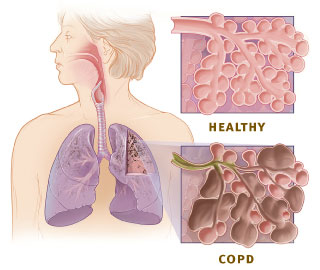Worldwide, around 1.5 million women are annually diagnosed with breast cancer. Approximately, 70of human breast cancers express estrogen receptor alpha (ERα); which are targeted by estradiol, a female hormone for initiation and progression of breast cancer.
The National Cancer Institute estimates that more than 200,000 Americans are diagnosed with breast cancer every year. It is the second leading cause of cancer death among American women, claiming more than 40,000 lives in 2009 alone.
These tumors are eligible for hormonal manipulation as neoadjuvant therapy after surgical treatment. Over the last 30 years, tamoxifen is being used as estrogen receptor blocker having good results.In about half of the cases of ER ve breast cancer recurrences may either be due to acquired resistance after initial response or to intrinsic insensitivity to tamoxifen.Their tumors respond to the treatment at first, but then the cancer rebounds and develops the ability to proliferate and grow even when the estrogen receptor is blocked.
Researchers at the Cancer Research UK Cambridge Research Institute have discovered for the first time the mechanism by which the breast cancer therapy tamoxifen operates. It switches off a breast cancer gene ErbB2 via a protein called Pax2. Pax2 acts to keep ErbB2 switched off. Tamoxifen resistance occurs when ErbB2 remains switched on.
But, the mechanism of acquiring resistance is not that simple, rather, there can be multiple factors involved in tamoxifen resistance. One of the mechanisms can be the phosphomodifications of ERα in tumor cells that can affect the response to tamoxifen.
Some 19 phophorylation sites have been identified in ERα, Phosphorylation of some sites are beneficial for tamoxifen response, whereas, resistance is likely to occur when some other site are phosphorylated.
Tumors can find ways to modify their genes to become resistant to tamoxifen. This process is called \'epigenetics,\' where genes are turned on and off, but the sequence of DNA is not altered. This kind of breast cancer resistance can be prevented with histone deacetylase (HDAC) inhibitors.
Researchers have found that estrogen receptor (ER)-positive breast cancer tumors alter their genes to create more AKT, a tyrosine kinase protein that spurs actions within the cell to keep it alive; the opposite of what tamoxifen is designed to do.
Several kinase pathways have been associated with tamoxifen resistance, including activation of the protein kinase A (PKA), mitogen-activated protein kinase (MAPK) and p21-activated kinase-1 (PAK-1) signaling pathways. These kinases induce phosphorylation of ERα or of its coregulators.
EGFR and cErbB2 can also affect ER signaling. Tamoxifen response may be restored by blocking EGFR with gefitinib. In a clinical study, blocking cErbB2 with trastuzumab restores ERα signaling in ERα-positive tumors and improves response to the aromatase inhibitor, letrozole.
Histones are a group of protein around which the DNA coils to acquire a compact form. To carry out gene expression, a cell must control the coiling and uncoiling of DNA around histones.
This is accomplished with the assistance of histone acetylases (HAT), which acetylate the lysine residues in core histones leading to a less compact and more transcriptionally active chromatin. On the other hand, the actions of histone deacetylases (HDAC) remove the acetyl groups from the lysine residues leading to the formation of a condensed and transcriptionally silenced chromatin. HDAC inhibitors (HDI) can block this action that results in hyperacetylation of histones, thereby opening up gene expression.
HDAC associated hyperacetylation results in decoiling of nucleasome that can suppress some gene expressions and on the contrary activate some others. Recent studies have shown that the estrogen receptor alpha (ERalpha) can be hyperacetylated in response to histone deacetylase inhibition, suppressing ligand sensitivity and regulating transcriptional activation.
A number of structurally diverse histone deacetylase inhibitors have shown potent antitumor efficacy with little toxicity in vivo in animal models. Several compounds are currently in early phase clinical development as potential treatments for solid and hematological cancers both as monotherapy, and in combination with cytotoxics and differentiation agents.
In a preclinical study, researchers introduced the HDAC inhibitor PCI-24781 at an early phase of tamoxifen treatment and found that it reverses the tumor\'s survival strategy of increasing production of AKT, thus stopping the tumor cells from developing resistance and went to higher levels of cell death, apoptosis.
The HDACs regulate the response of AKT to tamoxifen, and together, the effects of HDAC inhibitors and tamoxifen can lead to more cell deaths, if introduced in breast cancer therapy.
The next step is to take this drug into clinical trials to investigate whether resistance to therapy can be prevented in patients with ER-positive breast cancer. A new look at AKT as a biomarker may help identify patients who are likely to benefit from this type of treatment.
Article Source: http://www.articlesbase.com/cancer-articles/mechanism-of-tamoxifen-resistance-and-molecules-to-nullify-it-in-breast-cancer-treatment-5411339.html
About the Author
Dr. Prahallad Panda, Surgeon, Paradip Port Trust, Paradip, Odisha, India. Author of free medical blog ' From A Clinician\'s Bioscope can be accessed from here' and '> To view 'Clinician On Net', go here.
...
Click here to Subscribe news feed from "Clinicianonnet; so that you do not miss out anything that can be valuable to you !!
...






